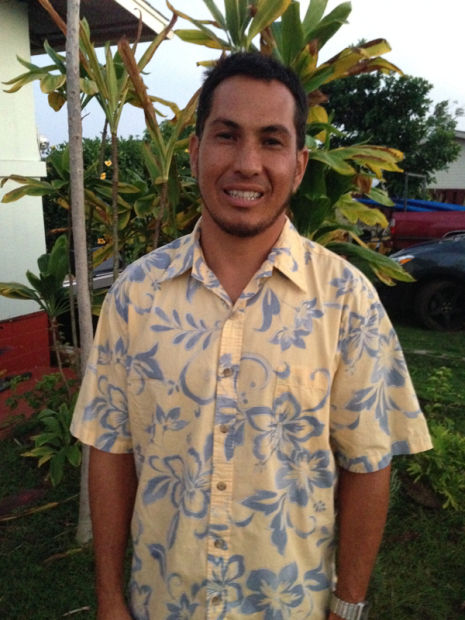LIHUE — When James Thomas began hearing reports trickling in about the devastation caused by Typhoon Haiyan, the Kapaa resident knew there was work that needed to be done. But he didn’t want to only make a monetary donation toward
LIHUE — When James Thomas began hearing reports trickling in about the devastation caused by Typhoon Haiyan, the Kapaa resident knew there was work that needed to be done.
But he didn’t want to only make a monetary donation toward the cause — he wanted to be there to be a part of that change.
“We (my wife and I) don’t have any family there or anything, but after hearing the news of what was happening there, we felt broken hearted,” Thomas said.
It was around that same time when Thomas heard about a small disaster relief mission being sent to the Philippines by the Japanese International Baptist Church, his former church in Tigard, Ore.
“They sent out a team when the tsunami happened in Japan and went to New Orleans, so they’ve had a little experience with this now,” Thomas said. “We were looking at any way we could help and the opportunity presented itself.”
Armed with two carry-on bags filled with water filters, nonperishable food and medical supplies, Thomas, the sole Hawaii resident in the group, is leaving this morning for the Philippines, where he and two other church volunteers will deliver and administer aid to the southern region of Leyte Island, one of the areas hardest hit by the record-breaking storm.
Thomas, an emergency medical technician, said Monday he will fly from Lihue into Honolulu to catch a flight to Manila, the capital city of the Philippines, before arriving into Cebu.
From there, he and the other two volunteers will catch a ferry to Sogod on southern Leyte Island, about 78 miles south of Tacloban city, where their contacts on the ground have established a command center.
The three-person group, he said, will also work with Christian nonprofit Compassion International and the Philippines government during their 10-day trip to help provide clean drinking water and medical supplies.
The biggest challenge, he said, will most likely be finding a reliable form of transportation around the island — a problem that has been further complicated by blocked or damaged roads and limited gas rations.
“We’re going hoping to try to get off the beaten path and reach the smaller villages because a lot of the aid is going into the bigger cities, like Tacloban, and getting stuck there, so we’re going to try and hike in … and try to reach some people who haven’t been reached yet,” Thomas said.
Thomas said he and the two other volunteers will be distributing about 50 water filters to survivors in storm-ravaged villages. Each water filter, he said, can provide up to 100 people with water for at least five years.
“It’s something that was needed even before some areas were devastated by the typhoon,” Thomas said. “Hopefully, we’ll be able to help in any way we can.”
But sustaining the physical needs of survivors, he said, is only one part of their mission.
“It’s really important to show them the love and that they’re not forgotten and I think that’s going to be key for us,” Thomas said. “We would like to offer hope and fulfill their needs in any way we can.”


